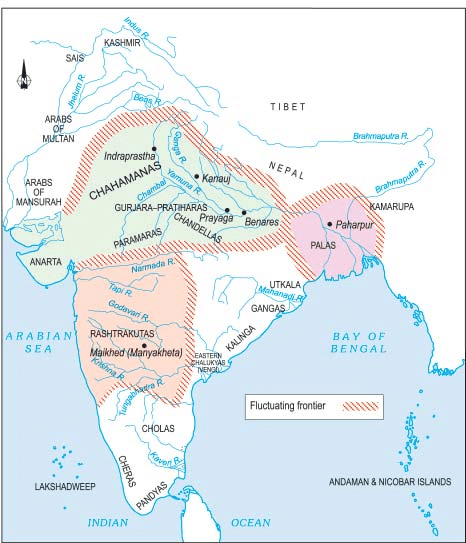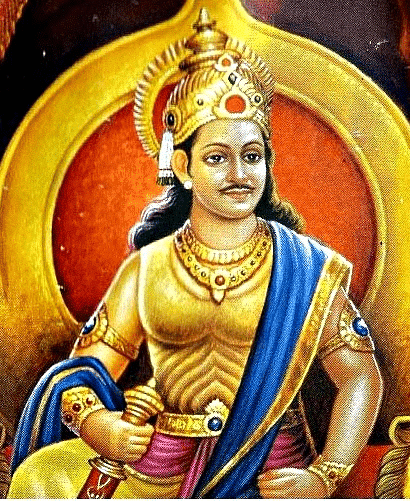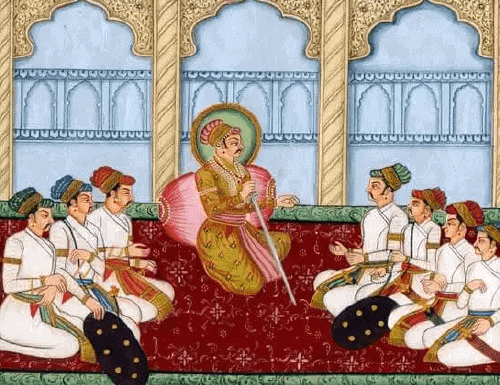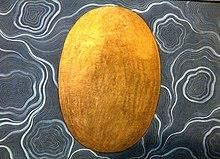Class 7 History Chapter 2 Notes - New Kings and Kingdoms
| Table of contents |

|
| The Emergence of New Dynasties |

|
| Administration in the Kingdoms |

|
| Prashastis and Land Grants |

|
| Warfare for Wealth |

|
| A Closer Look: The Cholas |

|
| Important Dates |

|
| Frequently Asked Questions |

|
Several major ruling dynasties emerged in different parts of the subcontinent between the seventh and twelfth centuries.
 The major ruling dynasties
The major ruling dynasties
The Emergence of New Dynasties
As the influence of kings and emperors varied throughout the Indian subcontinent, new dynasties rose from the ranks of powerful landlords and military leaders, changing the political scene by claiming their independence and establishing strong kingdoms

Big Landlords and Warrior Chiefs (Samantas):
- By the 7th century, various areas of the subcontinent had large landlords and warrior leaders known as Samantas.
- These Samantas were acknowledged as subordinates by the reigning kings.
- They were expected to present gifts to their kings, attend royal courts, and offer military support.
Rise to Power and Independence:
- As the Samantas acquired more power and wealth, they began to call themselves Maha-Samanta or Maha-Mandaleshvara (the great lord of a region).
- Some even claimed independence from their rulers.
Example of the Rashtrakutas:
- The Rashtrakutas in the Deccan started as subordinates to the Chalukyas of Karnataka.
- In the mid-8th century, Dantidurga, a chief of the Rashtrakutas, overthrew his Chalukya lord.
- Dantidurga performed a ritual called Hiranyagarbha (golden womb). This ritual, aided by Brahmanas, was believed to lead to the 'rebirth' of the sacrificer as a Kshatriya, regardless of his birth status.
 Dantidurga: Founder of Rasthrakuta Empire
Dantidurga: Founder of Rasthrakuta Empire
New Kingdoms by Enterprising Families:
- In some cases, individuals from ambitious families used their military skills to establish kingdoms.
- For instance, the Kadamba Mayurasharman and the Gurjara-Pratihara Harichandra were Brahmanas who abandoned their traditional roles and took up arms, successfully founding kingdoms in Karnataka and Rajasthan respectively.
Administration in the Kingdoms
During the era of new dynasties, kings not only took on impressive titles but also distributed their power and duties with Samantas (subordinate rulers), groups of peasants, traders, and Brahmanas to manage their kingdoms effectively.
 King was given big titles like Maharaja-Adhiraja
King was given big titles like Maharaja-Adhiraja
Grand Titles of Kings:
- New kings adopted grand titles like Maharaja-Adhiraja (great king, overlord of kings) and Tribhuvana-Chakravartin (lord of the three worlds).
- These titles symbolised their authority, although they often shared power with Samantas (subordinate rulers), along with groups of peasants, traders, and Brahmanas.
Resource Collection and Usage:
- In each state, resources came from producers—namely, peasants, cattle-keepers, and artisans who were often persuaded or forced to give up part of their output. Revenue was also gathered from traders.
- These resources funded the king’s court, the building of temples and forts, and were used in wars, which were expected to bring in wealth through plunder and access to land and trade routes.
Variety of Taxes:
In kingdoms like the Cholas in Tamil Nadu, a diverse range of taxes was imposed. The inscriptions from the Cholas mention over 400 terms for different types of taxes. The most common taxes included:
- Vetti: A tax taken in the form of forced labour rather than cash.
- Kadamai: Land revenue.
- Other taxes applied to daily activities, such as thatching roofs, using ladders for palm trees, and inheritance of family property.
Hereditary Administration:
- Roles in revenue collection and administration were often passed down through influential families.
- This also applied to the army, where close relatives of the king frequently held these positions.
Prashastis and Land Grants
Prashastis and land grants were important tools in ancient Indian governance, providing insights into how rulers wanted to be remembered and rewarding loyal subjects, especially the Brahmanas.
What are Prashastis?
- Prashastis are inscriptions or documents that commend the actions and virtues of kings.
- They were created by learned Brahmanas, who sometimes played a role in the kingdom's administration.
- While prashastis tended to exaggerate the rulers' achievements, they offer valuable insights into how kings aimed to be perceived—as brave, successful, and strong leaders.
Example of Nagabhata’s Prashasti:
- A well-known prashasti, written in Sanskrit and discovered in Gwalior, Madhya Pradesh, details the accomplishments of Nagabhata, a king of the Pratihara dynasty.
- The prashasti narrates that "The kings of Andhra, Saindhava (Sind), Vidarbha (part of Maharashtra), and Kalinga (part of Orissa) fell before him even while he was still a prince..." and emphasises that "He won a victory over Chakrayudha (the ruler of Kanauj)..." highlighting his military strength.

Role of Brahmanas:
- Kings frequently rewarded Brahmanas with land grants to show favour and secure their loyalty.
- These grants were recorded on copper plates, which were given to the recipients as proof of ownership.
Land Grants:
- Land grants were a common method for kings to reward loyal subjects, particularly Brahmanas, for their services.
- The grants were documented on copper plates, which served as proof of ownership.
- These grants were often situated in various parts of the kingdom and were used for different purposes, including farming and maintaining temples.
Kalhana’s Critique:
- In contrast to prashasti writers, Kalhana, a historian from Kashmir, often critiqued rulers and their policies.
- He wrote a lengthy Sanskrit poem chronicling the history of kings in Kashmir, using diverse sources such as inscriptions, documents, eyewitness accounts, and earlier histories.
- Kalhana’s work is significant for its critical perspective on rulers and their policies, offering a more balanced view of history.
Warfare for Wealth
Warfare was a common approach for medieval Indian rulers to grow their kingdoms and gain riches. The aim to control important areas and show dominance led to many of these battles.

Struggles for Control:
- Many ruling dynasties aimed to increase their territories by taking over other regions.
- A particularly sought-after area was Kanauj in the Ganga valley, often referred to as the tripartite struggle due to the involvement of three groups.
- For centuries, the Gurjara-Pratihara, Rashtrakuta, and Pala dynasties battled for control over Kanauj, resulting in a lengthy conflict.
Targeting Temples:
- Rulers frequently displayed their authority by constructing large temples, which became symbols of wealth.
- During conflicts, these temples often became prime targets since they were sometimes very rich.
- Mahmud of Ghazni from Afghanistan is a notable figure; he invaded the Indian subcontinent 17 times between 1000 and 1025 CE for religious reasons.
- His assaults focused on wealthy temples, such as the renowned Somnath Temple in Gujarat. Much of the wealth he seized was used to establish a magnificent capital city at Ghazni.
Expansions and Conflicts:
- Other rulers involved in warfare to expand their territories included the Chahamanas, later known as the Chauhans.
- They governed the area around Delhi and Ajmer and tried to extend their influence to the west and east, facing opposition from the Chalukyas of Gujarat and the Gahadavalas of western Uttar Pradesh.
- The Chahamana ruler Prithviraja III (1168–1192 CE) is notable for his battles against a Turk ruler named Sultan Muhammad Ghori. He defeated Ghori in 1191 but was defeated by him the following year, in 1192.
A Closer Look: The Cholas
From Uraiyur to Thanjavur
- The Cholas gained power when Vijayalaya, part of the ancient Chola family from Uraiyur, took control of the Kaveri delta from the Muttaraiyar, who were under the Pallava kings of Kanchipuram.
- In the mid-ninth century, Vijayalaya founded the city of Thanjavur and constructed a temple for the goddess Nishumbhasudini.

- The successors of Vijayalaya conquered nearby regions, resulting in the kingdom's growth in size and strength.
- Rajaraja I, regarded as the most influential Chola ruler, took the throne in 985 and extended control over many areas.
- He also reorganised the administration of the empire.
- Rajaraja's son, Rajendra I, followed his father's strategies and launched invasions into the Ganga Valley, Sri Lanka, and Southeast Asian countries, creating a navy for these campaigns
Splendid Temples and Bronze Sculpture
- The impressive temples of Thanjavur and Gangaikonda-cholapuram, built by Rajaraja and Rajendra, are true examples of architectural and sculptural excellence.
- Chola temples often became the nuclei of settlements that developed around them, serving as hubs for craft production.
- These temples were often given land by rulers and others. The produce from this land supported the various specialists who worked at the temple and typically lived nearby, including priests, garland makers, cooks, sweepers, musicians, and dancers.
- In essence, temples were not just places for worship; they were vital centres of economic, social, and cultural life.
- Among the crafts linked to temples, the creation of bronze images was particularly significant.

Brihadisvara Temple At Thanjavur
- The large temples of Thanjavur and Gangaikonda-cholapuram, created by Rajaraja and Rajendra, are remarkable in both architecture and sculpture.
- Chola temples often became the heart of nearby communities that developed around them.
- The resources from this land supported various specialists who worked and often lived close to the temple, including priests, garland makers, cooks, cleaners, musicians, and dancers.
- In essence, temples served not just as places of worship; they were also centres for economic, social, and cultural activities.
- Among the crafts linked to temples, the creation of bronze images stood out as particularly unique.
 A Bronze Sculpture
A Bronze Sculpture - Chola bronze images are regarded as some of the best in the world, often showcasing gods, goddesses, and various deities with lifelike characteristics.
- While most images depicted deities, there were occasions when images of devotees were also created.
Agriculture and Irrigation
Many of the Cholas' successes were due to advancements in agriculture. The Kaveri River branches into smaller streams before flowing into the Bay of Bengal. These streams provide the vital moisture needed for farming, especially for rice.

- The water from these streams is crucial for agriculture, particularly for rice farming.
- While agriculture had started earlier in other regions of Tamil Nadu, large-scale farming in this area began around the fifth or sixth century.
- Some forests had to be cleared, and land had to be levelled in certain regions.
- In the delta area, embankments were constructed to avoid flooding, and canals were built to direct water to the fields.
- In many regions, farmers grew two crops each year.
- Often, artificial irrigation was necessary for crops.
- A range of irrigation methods were employed. Some areas had wells dug, while others built large tanks to collect rainwater.
- Irrigation projects required careful planning, including managing labour and resources, maintaining the systems, and determining water distribution. Many new rulers and villagers took part in these efforts.
The Administration of the Empire
The administration was organised through a system of settlements called ur, which were groups of peasant villages. These groups formed larger units known as nadu, which carried out various administrative tasks such as providing justice and collecting taxes.
- Wealthy peasants had significant influence over nadu affairs under the oversight of the central Chola government.
- The Chola kings awarded some rich landowners titles like muvendavelan (a peasant serving three kings) and araiyar (chief), recognising their status and assigning them important state roles.
- Brahmanas frequently received land grants, resulting in numerous Brahmana settlements in the Kaveri Valley and other areas of South India.
- Each settlement was managed by an assembly or sabha, made up of prominent Brahmana landholders.
- These assemblies were very effective, and their decisions were recorded in inscriptions, often found on temple walls.
- Inscriptions from Uttaramerur in Tamil Nadu provide insights into the organisation of the sabha.
- The sabha had various committees responsible for tasks like maintaining irrigation systems, gardens, and temples.
- To choose committee members, eligible names were written on palm leaf tickets and placed in a pot.
- A young boy would draw the tickets one by one to select the members of each committee.

Important Dates
- 7th century – Rise of the new dynasties.
- Mid-eighth century – Rise of Rashtrakuta chief as Kshatriya.
- 1168-1192 – Prithviraja III ruled over the regions around Delhi.
- 1191 – Prithviraja III defeated Muhammad Ghori.
- 1192 – Prithviraja III lost a battle and was finished by Muhammad Ghori.
- 985 – Rajaraja I became a great Chola ruler.
- 5th/6th century – The area of Tamil Nadu was opened up for large-scale cultivation.
Frequently Asked Questions
Q.1. Which new dynasties emerged after the 7th century in the subcontinent?
Ans: Many new dynasties emerged after the 7th century like:
- Guijara-Pratiharas
- Rashtrakutas
- Palas
- Cholas
- Chahamanas or Chauhan
Q.2. Who collected the revenue?
Ans:
- The functionaries for collecting revenue were generally recruited from influential families.
- Their positions were often hereditary.
- This was true about the army as well.
- In many cases, close relatives of the king held these positions.
Q.3. Who was Mahmud Ghazni? How did he expand his kingdom?
Ans:
- One of the best-known such rulers is Sultan Mahmud of Ghazni, Afghanistan.
- He ruled from 997 to 1030 A.D.
- He extended control over parts of Central Asia, Iran, and the north-western part of the subcontinent.
- He Raided the subcontinent almost every year—his targets were wealthy temples, including Somnath, Gujarat.
- He used most of the wealth to create a splendid capital city at Ghazni.
- He was interested in finding out more about the people he conquered.
- He entrusted a scholar named al-Biruni to write an account of the subcontinent.
- This Arabic work, known as the Kitab al-Hind, remains an important source for historians.
- He consulted Sanskrit scholars to prepare this account.
- In some cases, individuals from ambitious families used their military skills to establish kingdoms.
- For instance, the Kadamba Mayurasharman and the Gurjara-Pratihara Harichandra were Brahmanas who abandoned their traditional roles and took up arms, successfully founding kingdoms in Karnataka and Rajasthan respectively.
|
63 videos|371 docs|46 tests
|
FAQs on Class 7 History Chapter 2 Notes - New Kings and Kingdoms
| 1. What were the key features of administration in ancient kingdoms? |  |
| 2. What is a prashasti, and how did it function in the context of land grants? |  |
| 3. How did warfare contribute to the wealth of kingdoms during ancient times? |  |
| 4. What were the notable achievements of the Chola dynasty? |  |
| 5. Can you provide important dates related to the emergence and decline of various dynasties? |  |






















